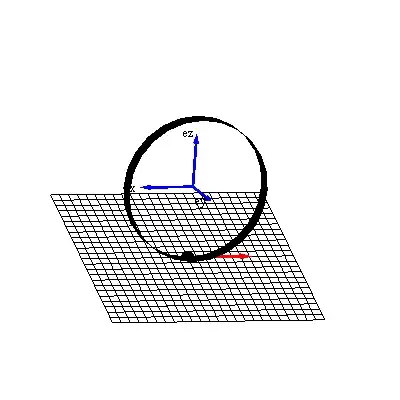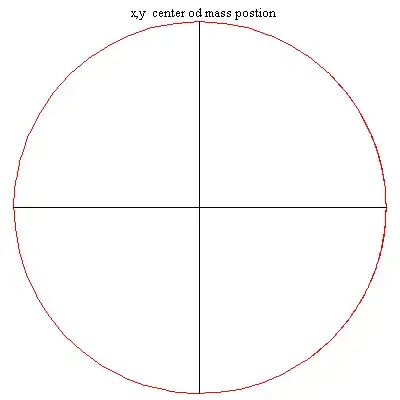So I am exploring my Cyr wheel (not me performing), and I want to try to express its movement in the best possible way. I will not be attempting the impossible, so just the wheel/ring/hoop, and not the wheel+human system.
Assuming no slipping and that the wheel is always in contact with the floor. Radius of ring is much bigger than thickness. (1 m and 1.5 cm)
Defining the $xyz$ coordinate system with the $yz$ plane as the plane of the wheel, and the $x$-axis as the axis of symmetric rotation (rolling). We then also have a spinning motion about the z-axis, and a tilt/fall along the y-axis. Now, I know that this is where my mistake lies, because as the wheel tilts either the coordinate system will not follow the wheel (easiest to visualize) and so x is no longer the symmetric axis, or the coordinate system follows the wheel (maybe easiest to calculate?) and rotation about y loses meaning.
We have $$ T = \frac{1}{2}mv^2+\frac{1}{2}I_x\omega_x^2+\frac{1}{2}I_y\omega_y^2+\frac{1}{2}I_z\omega_z^2, $$ $$ V = mgh = mg\sin\phi, $$ with $\phi$ as the angle between the plane of the wheel and the floor. Since we have no slipping (or rather, no "travelling" slipping, as the wheel can still spin), $v=\omega_xr$.
$I_x=mr^2$, $I_y=I_z=\frac{1}{2}mr^2$, and defining $\omega_x = \dot{\theta}$, $\omega_y = \omega$, $\omega_x = \dot{\phi}$, gives $$ L = \frac{1}{2}mr^2\left(2\dot{\theta}^2+\frac{1}{2}\omega^2+\frac{1}{2}\dot{\phi}^2\right)-mgr\sin\phi, $$ yielding $$ \ddot{\phi} = 2g\cos\phi,\, \ddot{\theta}=0,\, \dot{\omega}=0. $$ The answers make sense in a naive way, but they provide no information about for example rolling at an angle in a circle or spinning or a combination of the two. Energy lost to friction shouldn't matter in order to produce some illuminating results, right?
I've already seen this question about a coin and this paper about a tilted rolling disk, but I'm afraid it's been too long since uni for me to be able to make the transfer. I'm also guessing there's quite a few similarities to an Euler disc. Any and all help appreciated!


